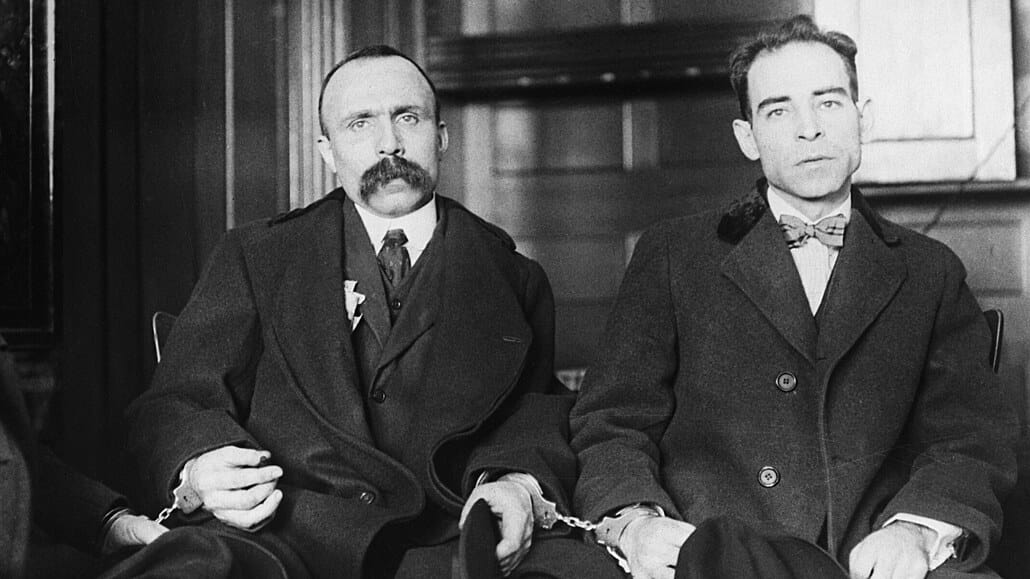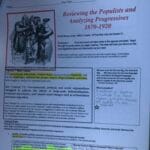The Trial That Gripped a Nation: Sacco and Vanzetti
Step back in time to the Roaring Twenties, a period of flapper dresses, jazz music, and a palpable fear of anarchists disrupting the social fabric of America. It was during this time that two Italian immigrants, Nicola Sacco and Bartolomeo Vanzetti, found themselves at the heart of a trial that would not only define their lives but also ignite a firestorm of debate about justice, immigration, and the very foundation of the American legal system. This is their story.
America’s Age of Anxiety: The Red Scare Looms Large
The year was 1920. The Red Scare, fueled by anxieties stemming from the Bolshevik Revolution, had cast a long shadow over the United States. Immigrants, especially those harboring radical political views, became easy targets for suspicion. It was within this climate of fear and prejudice that a shocking crime took place in South Braintree, Massachusetts. Two men, a paymaster and his guard, were shot and killed during a payroll robbery at a shoe factory.
The Accused: Sacco and Vanzetti – Immigrants, Anarchists, Suspects
Enter Nicola Sacco, a shoemaker, and Bartolomeo Vanzetti, a fish peddler. Both were Italian immigrants and self-proclaimed anarchists. This, combined with their immigrant status, immediately painted them as likely suspects in the eyes of many. But was their guilt a foregone conclusion?
A Trial of Evidence or Prejudice?
The trial, to put it mildly, was a spectacle. The evidence against Sacco and Vanzetti was largely circumstantial. Eyewitness accounts were often contradictory and unreliable, and the physical evidence, including the ballistics, was far from conclusive. However, the trial wasn’t merely about the facts of the case; it became a stage where societal fears and anxieties played out.
- The Prosecution’s Case: The prosecution played heavily on the anti-immigrant sentiment of the time, suggesting that Sacco and Vanzetti’s anarchist beliefs made them inherently dangerous revolutionaries capable of violence.
- The Defense’s Plea: The defense team tirelessly argued that the two men were being used as scapegoats, targeted for their beliefs rather than concrete evidence. They highlighted the inconsistencies in eyewitness accounts and challenged the reliability of the ballistics evidence.
A Nation Divided: Guilty or Not Guilty
Despite the defense’s efforts, the jury found Sacco and Vanzetti guilty in 1921. The court sentenced them to death. This verdict ignited a firestorm of outrage and protests across the globe. People questioned the fairness of the trial, with many believing that the verdict was based more on anti-immigrant hysteria than on solid evidence.
Appeals, Doubts, and a Legacy of Questions
For the next six years, Sacco and Vanzetti remained imprisoned while their lawyers fought tirelessly for a new trial. New evidence emerged, including a confession from another convicted criminal, Celestino Madeiros, who claimed that Sacco and Vanzetti were not involved in the Braintree robbery and murders. However, despite the growing doubts and international pleas for clemency from prominent figures like Albert Einstein and H.G. Wells, their appeals were repeatedly denied.
A Tragic End, An Unsettled Legacy
In 1927, Sacco and Vanzetti were executed. Their deaths sent shockwaves through the nation and the world. It wasn’t just about the fate of two men; it became a symbol of justice, fairness, and the dangers of allowing fear and prejudice to influence the legal system. To this day, the Sacco and Vanzetti case remains one of the most controversial in American history.
- Were they guilty? Some historians, after examining the evidence, believe that Sacco might have been involved, while others maintain that both men were innocent pawns caught in a larger game of political maneuvering.
- A Chilling Reminder: The case serves as a stark reminder of the fragility of justice and the enduring power of fear to shape perceptions and influence outcomes.
Exploring Further:
- Hitchcock Films Shot in Vistavision: If you’re interested in classic films, you might be interested in learning more about Hitchcock films shot in Vistavision.
- The Lizzie Borden Case: Have you ever wondered about the infamous case of Lizzie Borden took an?
- The Mongol Empire: The Mongolian Empire was one of the most powerful empires in history. Find out what empires collapsed because of the Mongolian Empire.
- Classic Cars: For those who love automobiles, A&E classic cars is a must-watch.
Key Points to Remember:
- The Setting: The trial took place during the Red Scare (1919-1920), a time when fear of communist and anarchist ideologies ran high, fueling prejudice against immigrants.
- The Accusations: Nicola Sacco and Bartolomeo Vanzetti, Italian immigrants and self-proclaimed anarchists, were accused of murder and robbery, charges they consistently denied.
- A Flawed Trial?: The evidence against them was largely circumstantial, relying on eyewitness accounts and ballistics evidence that have since been questioned. The prosecution heavily emphasized their political beliefs and immigrant status.
- Global Outrage: The case garnered international attention, with protests erupting worldwide, calling for a new trial and clemency for Sacco and Vanzetti.
- Enduring Legacy: The case continues to be debated by historians and legal scholars today, serving as a cautionary tale about the fragility of justice and the dangers of prejudice.
The Sacco and Vanzetti trial wasn’t just about a crime; it became a lightning rod for societal anxieties. It revealed how easily fear and bias can infiltrate a justice system and how the pursuit of justice can be elusive, especially for the marginalized and those perceived as “different.”
- Crypto Quotes’ Red Flags: Avoid Costly Mistakes - June 30, 2025
- Unlock Inspirational Crypto Quotes: Future Predictions - June 30, 2025
- Famous Bitcoin Quotes: A Deep Dive into Crypto’s History - June 30, 2025
















